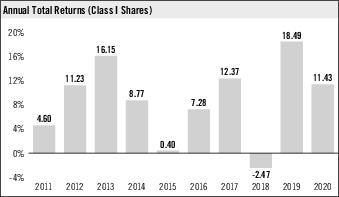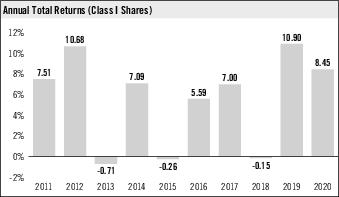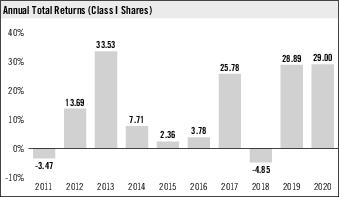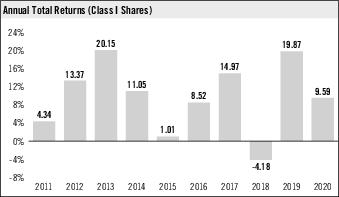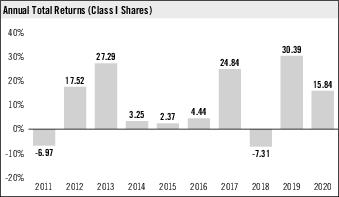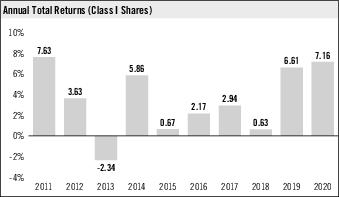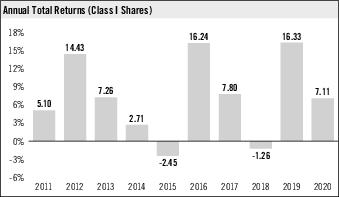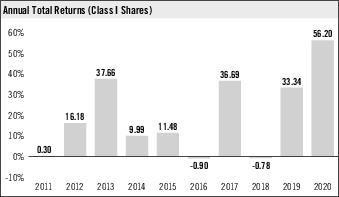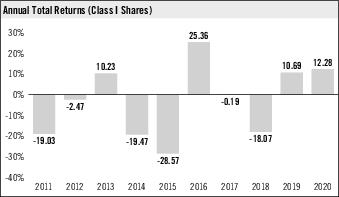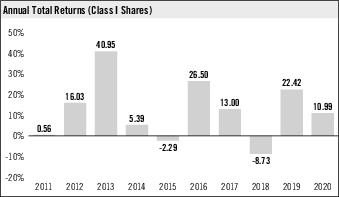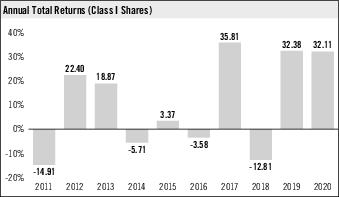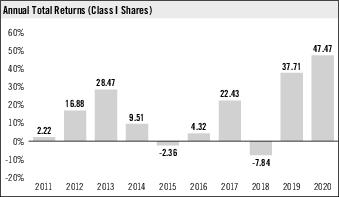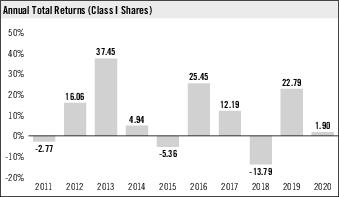Portfolio Subadvisers and Fee Rates |
|
|
|
|
|
|
|
|
|
0.375% of average daily net assets to $500 million;
0.325% of average daily net assets from $500 million to $1 billion;
0.30% of average daily net assets over $1 billion |
PSF Mid-Cap Growth (formerly, SP Prudential
U.S. Emerging Growth) |
J.P. Morgan Investment Management, Inc. (JPMorgan) |
0.40% of average daily net assets to $100 million;
0.36% of average daily net assets on next $900 million;
0.35% of average daily net assets over $1 billion |
PSF Small-Cap Value (formerly, SP Small-Cap
Value) |
Goldman Sachs Asset Management, L.P. (GSAM) |
0.50% for first $500 million in assets;
0.45% over $500 million in assets |
(1) Currently, only QMA is providing Additional Services for the Portfolio. In the event that Jennison and/or PGIM Fixed Income provide Additional Services along with or instead of QMA, each subadviser would receive 0.025% of the average daily net assets allocated to each subadviser, respectively.
Aggregation Notes to Subadviser Fee Rate Table:
* For purposes of calculating the fee payable to certain subadvisers, the assets managed by the subadviser will be aggregated with one or more other Portfolios or Funds. Each such aggregation arrangement is set out below:
GSAM: The assets of the following portfolios managed by GSAM will be aggregated: AST Goldman Sachs Small-Cap Value Portfolio of the Advanced Series Trust and PSF Small-Cap Value Portfolio.
Jennison Associates: the assets managed by Jennison in the PSF International Growth Portfolio will be aggregated with the assets managed by Jennison in the AST International Growth Portfolio of the Advanced Series Trust and any other portfolio subadvised by Jennison on behalf of PGIM Investments and ASTIS pursuant to substantially the same investment strategy.
LSV: the assets managed by LSV in the PSF Global Portfolio will be aggregated with the assets managed by LSV in: (i) the AST International Value Portfolio of Advanced Series Trust; (ii) the AST Advanced Strategies Portfolio of Advanced Series Trust; and (iii) any other portfolio subadvised by LSV on behalf of ASTIS and/or PGIM Investments pursuant to substantially the same investment strategy.
Brown Advisory: For purposes of calculating the fee payable to Brown Advisory, the assets managed by Brown Advisory in the PSF Global Portfolio will be aggregated with: (i) the portion of the AST Advanced Strategies Portfolio of the Advanced Series Trust for which Brown Advisory serves as subadviser; and (ii) other future large cap growth accounts under which Brown Advisory provides substantially similar advisory or subadvisory services and which Brown Advisory and PGIM Investments and/or ASTIS, as applicable, mutually agree in writing, may be included in determining the level of average daily net assets for purposes of the fee calculation.
PGIM Fixed Income: The assets of the PSF PGIM Government Money Market Portfolio will be combined with the assets of the Advanced Series Trust AST Government Money Market Portfolio.
T. Rowe Price: For purposes of calculating the subadvisory fee payable to T. Rowe Price, the large cap value strategy assets managed by T. Rowe Price will be aggregated with the large cap value strategy assets managed by T. Rowe Price for all other Prudential entities, including the assets of certain insurance company separate accounts managed by T. Rowe Price for the Retirement business of Prudential and its affiliates.
William Blair: The assets of the PSF International Growth Portfolio will be combined with the assets in the PSF Global Portfolio managed by William Blair, the Advanced Series Trust AST International Growth Portfolio, the Advanced Series Trust AST Advanced Strategies Portfolio and any other portfolio subadvised by William Blair on behalf of PGIM Investments and/or ASTIS, pursuant to substantially the same investment strategy.
Fee Waiver Notes to Subadviser Fee Rate Table:
T. Rowe Price: —Advanced Series Trust AST Advanced Strategies Portfolio
—Advanced Series Trust AST T. Rowe Price Asset Allocation Portfolio
—Advanced Series Trust AST T. Rowe Price Corporate Bond Portfolio
—Advanced Series Trust AST T. Rowe Price Diversified Real Growth Portfolio
—Advanced Series Trust AST T. Rowe Price Growth Opportunities Portfolio
—Advanced Series Trust AST T. Rowe Price Large-Cap Growth Portfolio
—Advanced Series Trust AST T. Rowe Price Large-Cap Value Portfolio
—Advanced Series Trust AST T. Rowe Price Natural Resources Portfolio
—The Prudential Series Fund PSF Global Portfolio
T. Rowe Price has agreed to reduce the monthly subadvisory fee for each Portfolio listed above (or the portion thereof subadvised by T. Rowe Price) by the following percentages based on the combined average daily net assets of the Portfolios listed above (or the portion thereof subadvised by T. Rowe Price) and the assets of certain insurance company separate accounts managed by T. Rowe Price for the Retirement business of Prudential and its affiliates (the “other accounts”):
Combined Average Daily Net Assets up to $20 billion:
—2.5% fee reduction on combined assets up to $1 billion
—5.0% fee reduction on combined assets on the next $1.5 billion
—7.5% fee reduction on combined assets on the next $2.5 billion
—10.0% fee reduction on combined assets on the next $5.0 billion
—12.5% fee reduction on combined assets above $10.0 billion
Combined Average Daily Net Assets above $20 billion:
—12.5% fee reduction on combined assets up to $20 billion
—15.0% fee reduction on combined assets on the next $10.0 billion
—17.5% fee reduction on combined assets over $30 billion
QMA: With respect to the PSF Stock Index Portfolio: QMA has voluntarily agreed to reduce its subadvisory fee rate by 0.025%.
In addition, the Investment Manager will pay QMA a fee for providing additional advisory services to the PSF Global Portfolio, including but not limited to asset allocation advice (Additional Services).
GSAM: GSAM has agreed to a voluntary subadvisory fee waiver arrangement that will apply across each of the portfolios or sleeves of portfolios subadvised by GSAM that are managed by the Investment Manager and ASTIS. The waiver is based on the following percentages based on the combined average daily net assets of each of the portfolios or sleeves of portfolios subadvised by GSAM:
—Combined assets up to $1 billion: 2.5% fee reduction
—Combined assets between $1 billion and $2.5 billion: 5.0% fee reduction
—Combined assets between $2.5 billion and $5.0 billion: 7.5% fee reduction
—Combined assets above $5.0 billion: 10.0% fee reduction


